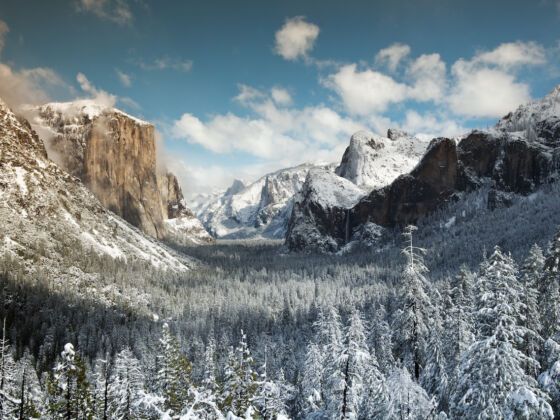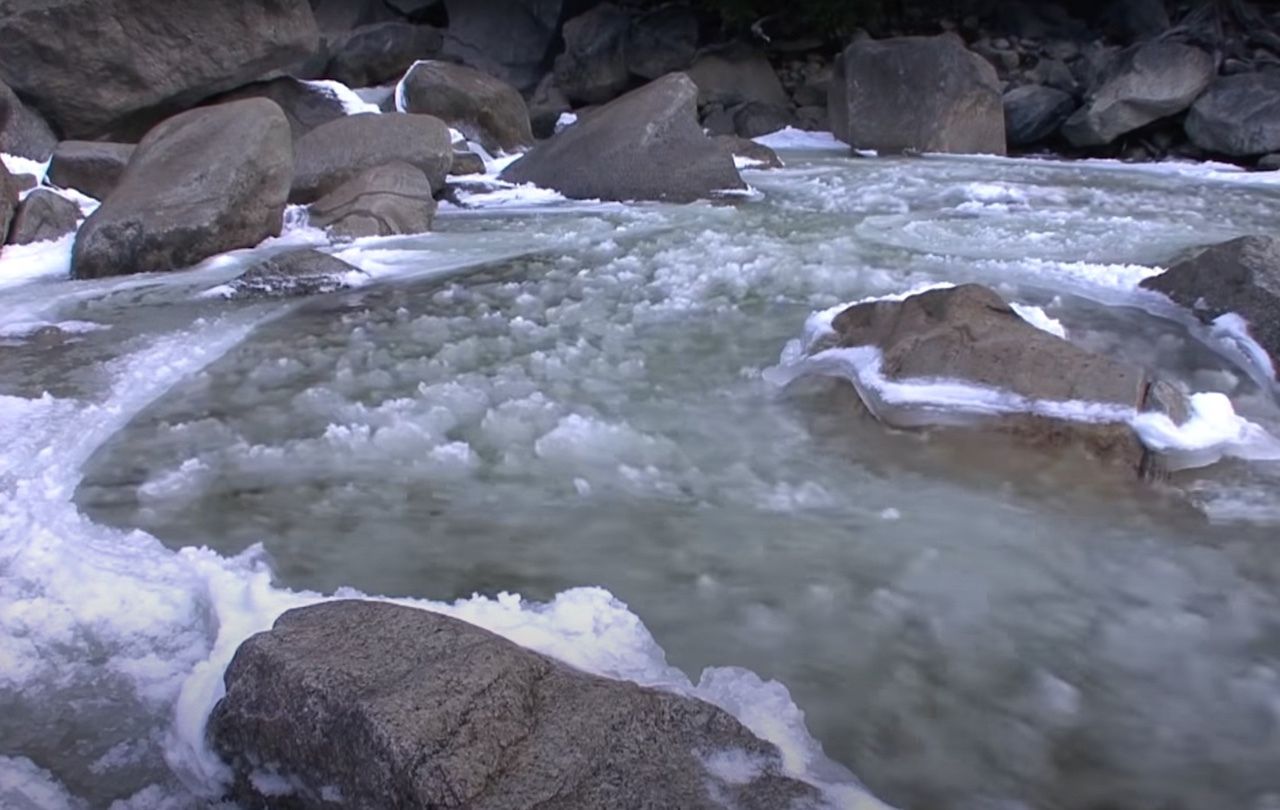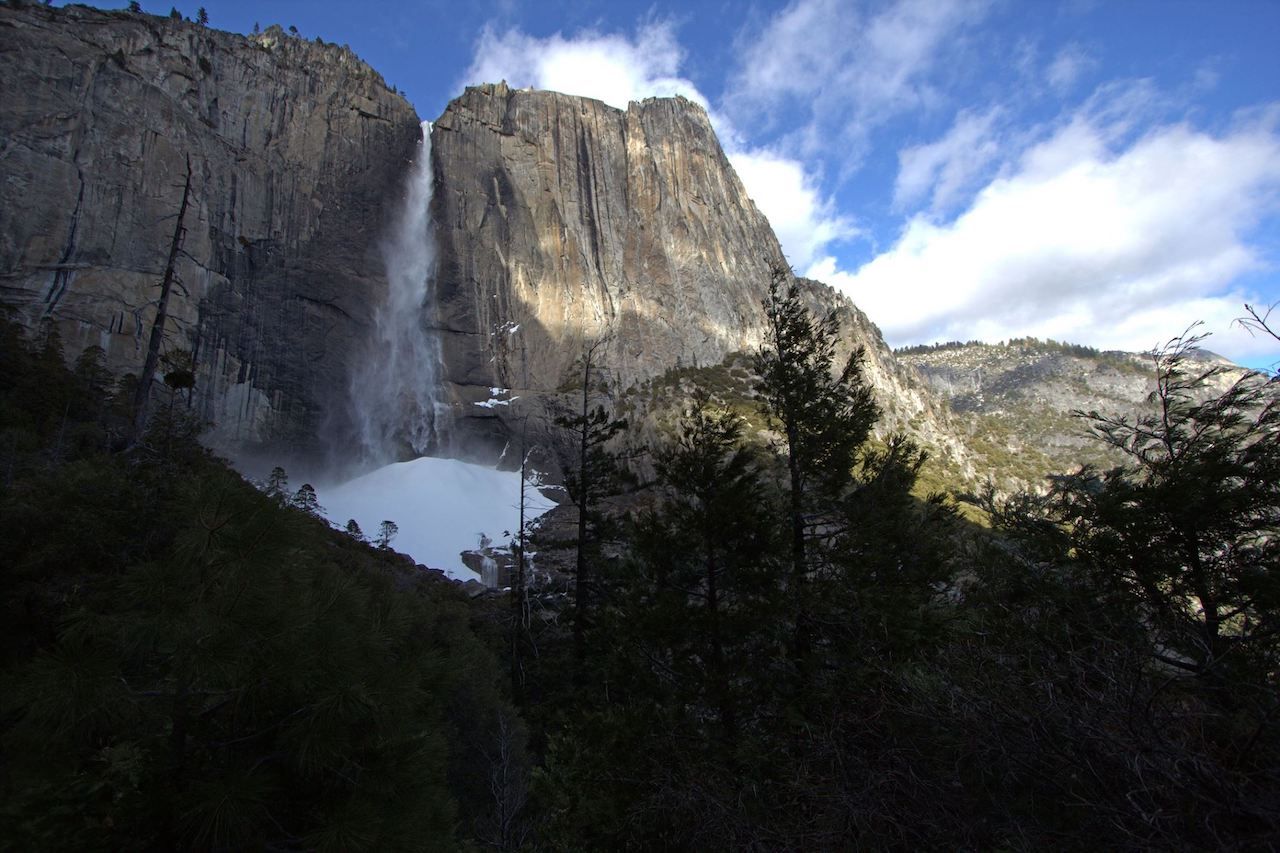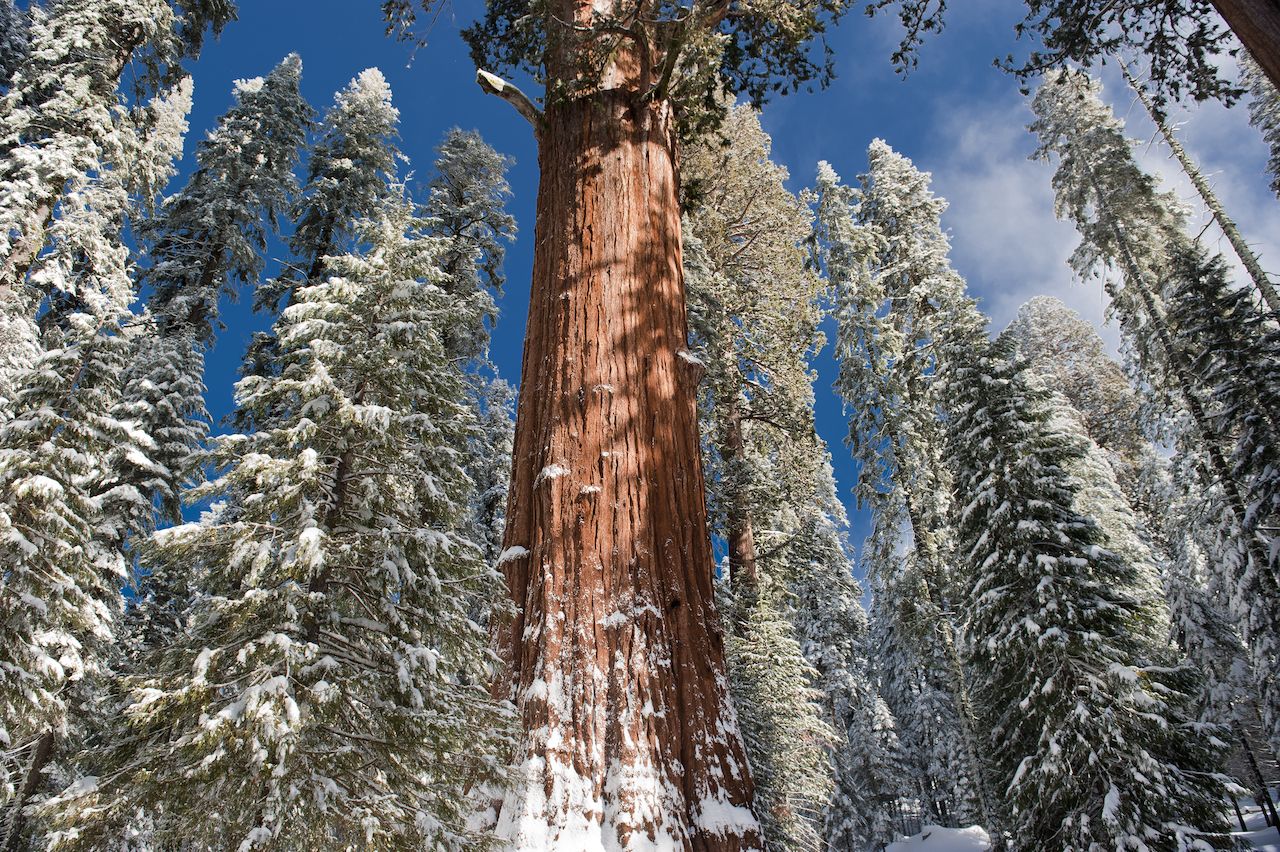Every winter, around the second week of February, the setting sun backlights Yosemite’s Horsetail Fall at just the right angle to appear as though lava, rather than water, cascades down the 176-foot rockface. This phenomenon is known as the “firefall.” Lasting roughly two weeks, the miracle of nature coaxes thousands of visitors out of hibernation and into the park each year, drawing as many as 2,000 spectators on a single day in 2019.
Peak season in Yosemite otherwise falls in summer, with the masses descending on the park between Memorial and Labor Day. With the exception of the firefall crowd, a relative lack of visitors is among the most convincing reasons to go to Yosemite in winter. Seeing the landscapes that earn the park its renown all snowy is another — of which Horsetail Fall is just one.
From ethereal cold-weather phenomena to the best of the winter wildlife, the following sights prove there’s no place like Yosemite in the winter, especially between December and February, far away from the firefall mob and everyone else unwilling to brave the cold.





